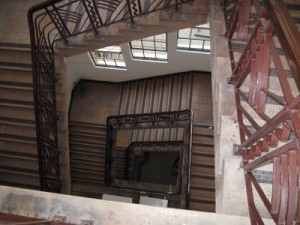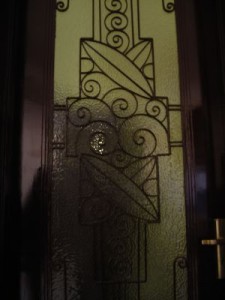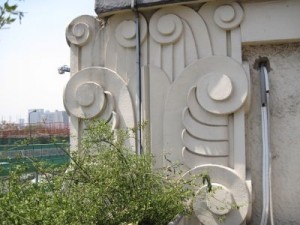
Old Shanghai was the place for all kinds of trade, money made as fast as possible and partying like no tomorrow. Besides those a small portion of the population was interested in science and saw the city as an entry point to China, a whole new world for discovery. These people studied China and its people as well as its flora, fauna and natural beauties. Besides the well known Royal Asiatic Society and its museum on Museum Road (today Yuan Ming Yuan lu), the French Concession also had it natural history museum, the Heude Museum.
Pierre Heude came to Shanghai in 1868 and started collected samples of mostly plants and insects. Based in Shanghai, he extended his reach throughout Zhejiang, Jiangsu and Anhui provinces while organizing expeditions to collect samples from 1868 to 1880. Exploration went on to surrounding areas including the Philippines, Indochina, Indonesia and as far as Polynesia. The museum was still within the Zi Kia Wei (today Xu Jia Hui) compound, at some point hosted in the weather station building after the station was moved to Sheshan. Frederic Courtois succeded Pierre Heude, continuing the tradition of exploration and sample collection. His successor supervised the relocation of the collections to the later Heude museum built in 1930. This building is now the seat of the Pasteur Institute in Shanghai and I recently had an opportunity to visit this art deco masterpiece that is normally not open to the public.

The building is located at the corner of Heife Lu and Chong Qing Nan lu’s elevated motorway. Pasteur Institute took the building over in 2004. In March of that year, the current director visited the building and saw what was the remaining of the Heude collection. When he came in June 2004, all of it had disappeared, living the building empty for the institute to move in. The Institute started a carefull renovation of the building that transformed it to welcome research facilities while making sure to preserve as much historical elements as possible.
As seen on my pictures, the Art Deco main stair case has been carefully renovated and is still used every day, along with windows in the service staircase. For needs of the institute, a supplementary staircase has been built in the same style, and one has to look carfeully to realise that it is not an original one.

I particularly like the door fens in the main entrance on Chong Qing Nan Lu but accessible from the inside. A tree leaf motives was used as decoration, indicating the purpose of the building as a natural history museum. Original floors have been kept as much as possible, while adapting the building for modern use as a biology laboratory.

External sculptures on the building that are repeated in many locations are great exemples of the Art Deco style. The building is now heritage registered and will hopefully be kept, even when the Pasteur Institute will move away in a more modern location.
Beautiful pictures. How did you manage to get them to let you in? Where are the original museum artefacts located now? Are they available to the visiting public?
Great post. Didn’t know our staircase could look that good 🙂
A nice friend working for the institute was my guide. We don’t know where the museum artefacts are now, though it is assumed that a part was sent to Beijing and a part is on display in the Shanghai Natural history museum.